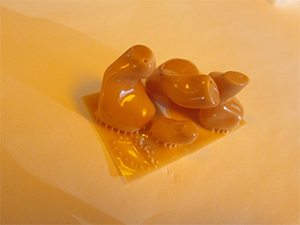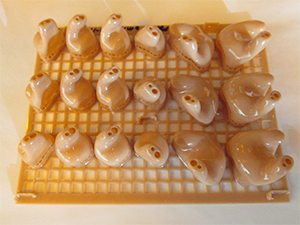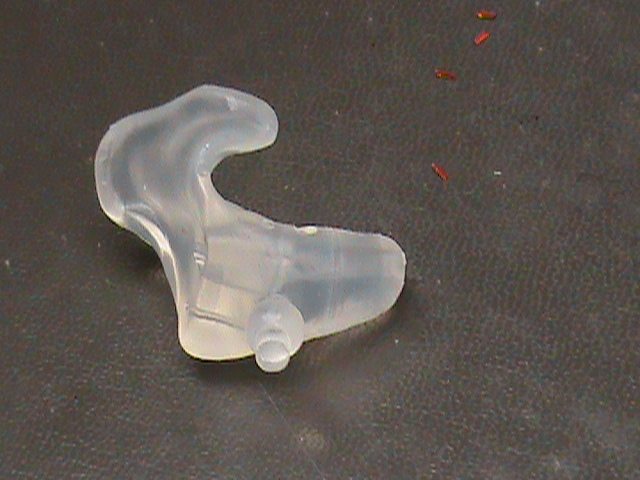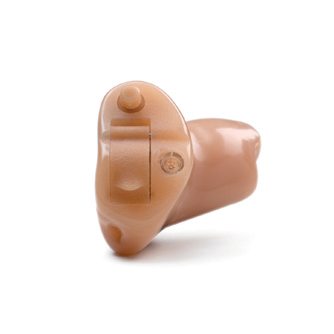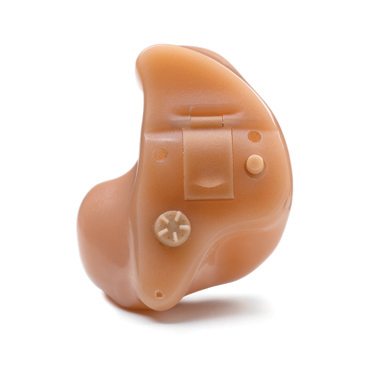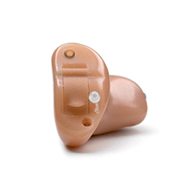GN ReSound – Hearing Aids in 3D
Hearing Aids in 3D
The first 3D printed shells were manufactured in the mid-nineties. While the printers could do their job, according to Schreiner there wasn’t enough support for the process in the form of scanners or software for the industry.
Eventually, Danish company Widex patented the process of 3D printing hearing aid devices, and GN Resound arrived later on the scene in 2001. GN Resound bought their first EnvisionTEC printer in the first quarter of 2003 and have only gone up from there. Originally the company had a 3D Systems si2 Viper SLA® System, a Selective Laser Sintering (SLS) machine also from 3D Systems and a Stratasys Prodigy™.
Russ Schreiner, Director of Development Engineering at GN ReSound, is in charge of the rapid manufacturing project at his company. Russ has worked on everything from procedure development and qualification of the various processes, to training protocols, to figuring out which 3D printers to buy. He has also worked with software companies to inspect sculpting functionality of their products.
Investigating and Investing in 3D Printing
Schreiner says the company looked at all the 3D printers available at the time, including DTM before 3D Systems bought them:
“We spent a lot of time trying to get the systems [we already had] to work, but they just didn’t have the resolution that we needed. The part quality coming off the Stratasys machines was a little bit questionable.”
The 3D Systems printers weren’t sustainable, either: their machines had a“fairly big footprint with a fairly big price tag.” Schreiner said GN ReSound “had a lot of small labs in Europe that we were trying to get to use the process, and the price tag and the size of the printers and the amount of material that they required kind of scared a lot of people off.” When EnvisionTEC equipment became available it was clear which choice made the most sense. The 3D printers from EnvisionTEC “were just as accurate if not a little bit better than the 3D Systems equipment,” according to Schreiner. They ran on less material, they had a smaller footprint and the ease of operation, as far as training operators and technicians on how to use the equipment was simpler as well.
Traditional vs Modern Processes
Manufacturing a hearing aid device used to be a complicated set of steps. First, a silicone cast was made of the patient’s ear. Then a designer had to sit down with tools and sculpt the impression into a recognizable final product. If the sculptor made a mistake, he had to send for a new impression cast and start over.
Traditional processing meant an impression of the ear was taken, from which the sculptor had to make a positive of the ear to pour plastic into. Once this was done the whole project was cured in ultraviolet light to get a plastic piece. This plastic piece still had to be drilled for vents and sound holes or general additional manual processing to acheive the final shape.
What’s product development look like now with the implementation of 3D printing into GN ReSound’s workflow?
The hearing aid industry by nature necessitates workhorse 3D printing and mass-individualization. This is why GN ReSound now commands a fleet of EnvisionTEC machines that can perform the necessary work, down to the micron. The company owns about 40 machines total: several Perfactory® 3 printers, a half dozen DDSP machines, a Perfactory® Micro, and two 3Dent™ printers.
- Beltone Change MC25
- Beltone Change ITE45
- Beltone Change CIC15
The current process of making a hearing aid with a 3D printer starts with a silicone cast or impression of someone’s ear, captured as a three-dimensional image by a digital scanner. CAD software specific to the hearing aid industry then turns the scan into the type of file that a 3D printer can read and duplicate.
This three-dimensional image allows the user to make alterations to the file to create the final shape of the product.
Schreiner says there can be 50 different types of products to design in CAD at a time. Once these are scanned and sculpted, the team uses Magics software to create supports. Once the pieces are built, a technician or a production operator take the parts off of the machine and complete post-processing. Once all of the manufacturing details have been taken care of, each part is allotted to a specific order. Out of all of what GN ReSound builds, nothing is the same; each piece is custom-made for each individual.
With 3D printing, Schreiner says GN ReSound has departed from the inconsistencies often resulting from traditional methods of manual labor. Understandably, sculpting an ear shell by hand may not always be accurate taking human error into account. Hearing aid devices typically include small details such as vents and sound tubes which are incorporated after the shell has been made.
The Benefits of Success
“Now with all of this digital processing, we’ve gotten away from all the manual inconsistencies.”
Using the automated processes allowed by EnvisionTEC systems, manual production costs have decreased at GN ReSound. Instead of a person pouring one ear shell at a time, now a machine does a build plate full at once, and then some.
All the labor previously associated with making one hearing aid has been replaced by an automated process which can complete many pieces at once — with less additional post-processing, as well.
“You’re getting a lot more consistency out of it because when you cut and round objects the computer basically does it exactly the way you want it,” Schreiner said. “In the case of somebody sitting on the bench with tools, you’re not getting the same level.”
“Once you have your file you can send it anywhere in the world to be manufactured.”
Finally, Schreiner also believes file management to be a significant plus of 3D printing. Hearing aids can now be manufactured virtually anywhere, with greater quality and frequency, bringing improved life quality to people all over the world.
About GN ReSound
GN ReSound is a leading manufacturer in
the hearing aid industry originating in
1946. The company is located in Bloomington,
MN and Toronto, ON.
Contact
Bloomington, MN I USA
Tel. (800) 248-4327
Fax: (952) 769-8001
www.gnresound.com
gnresound@gnresound.com




